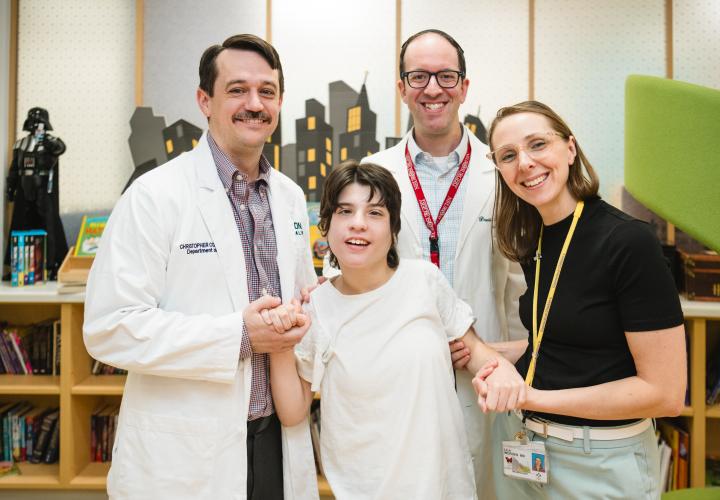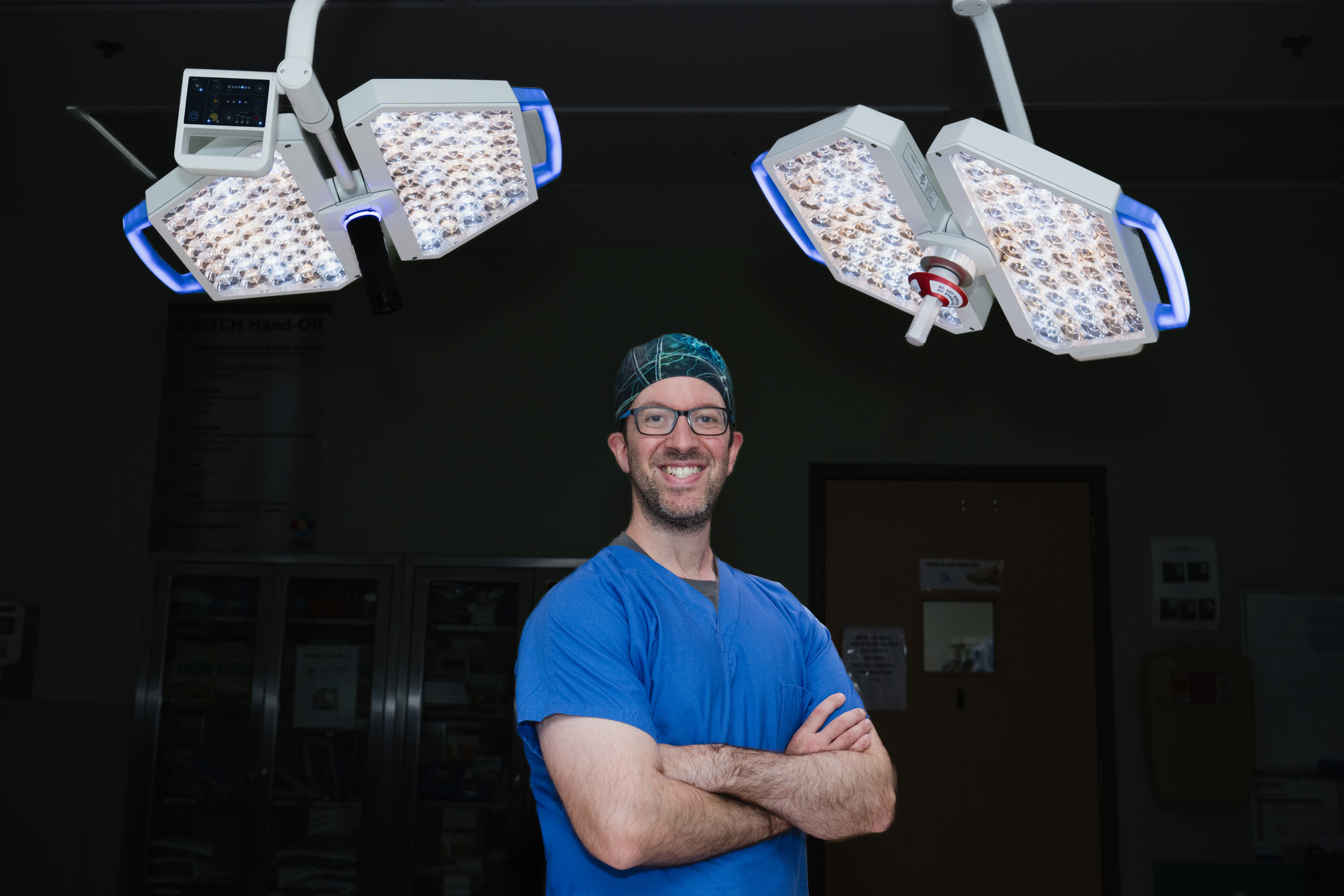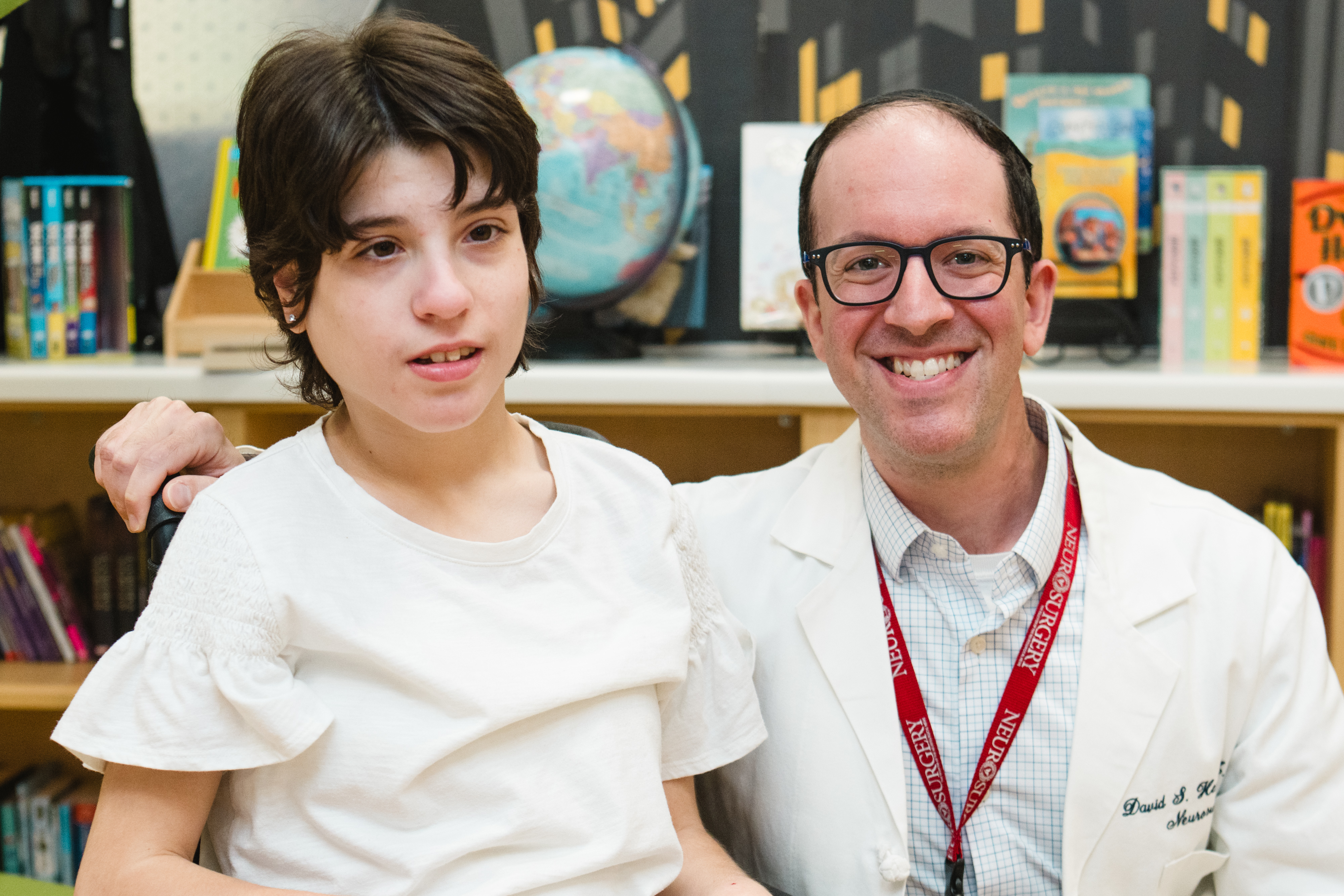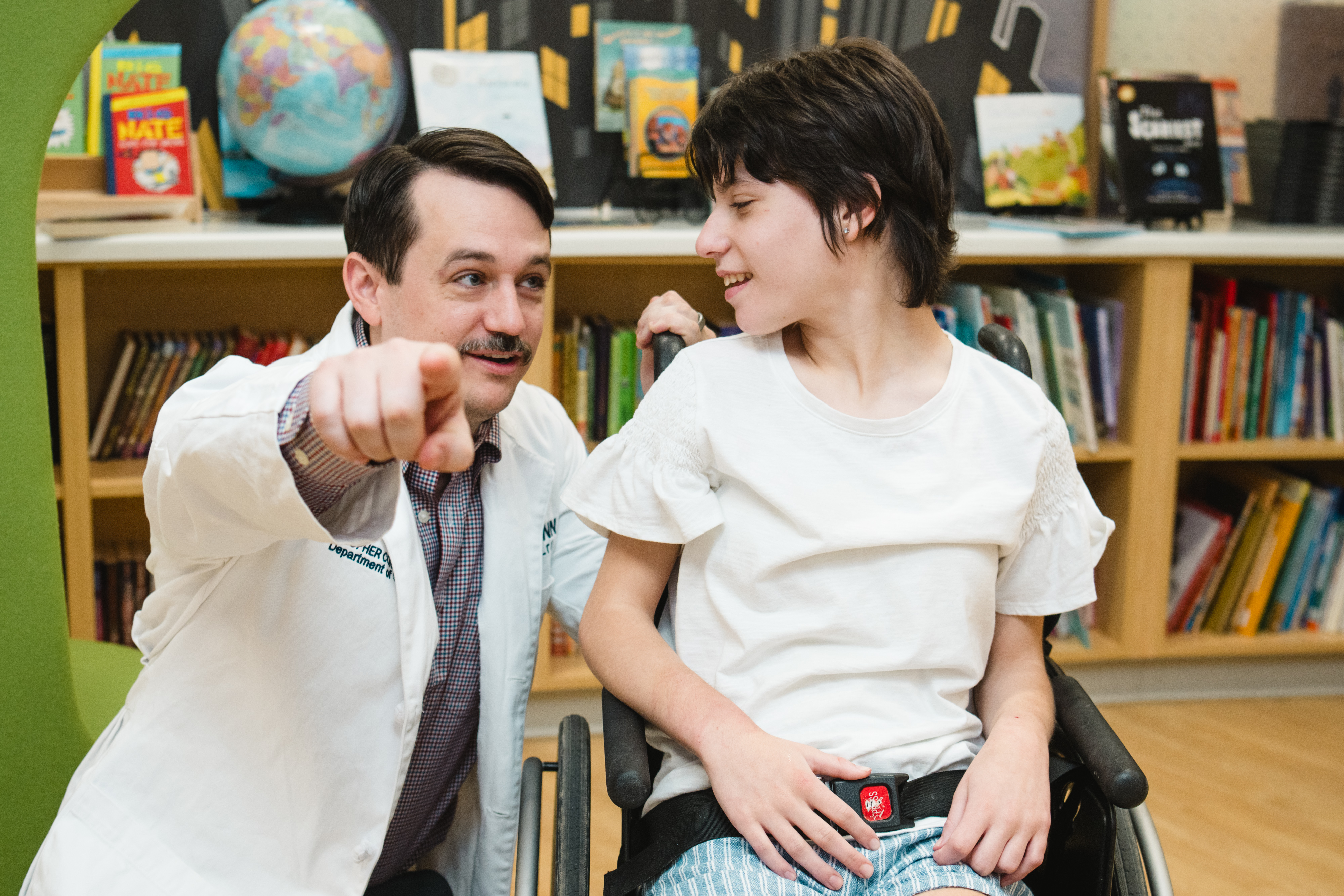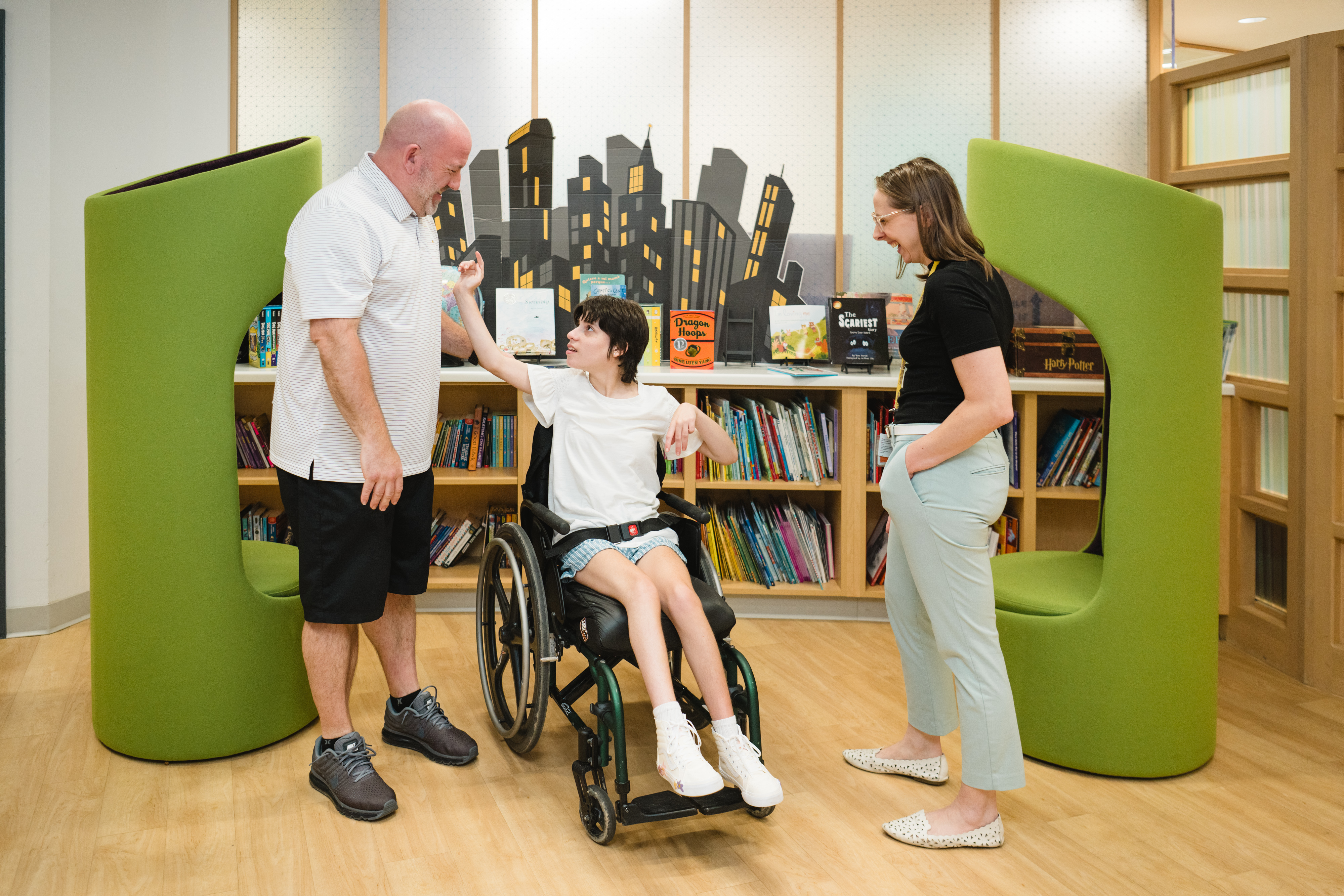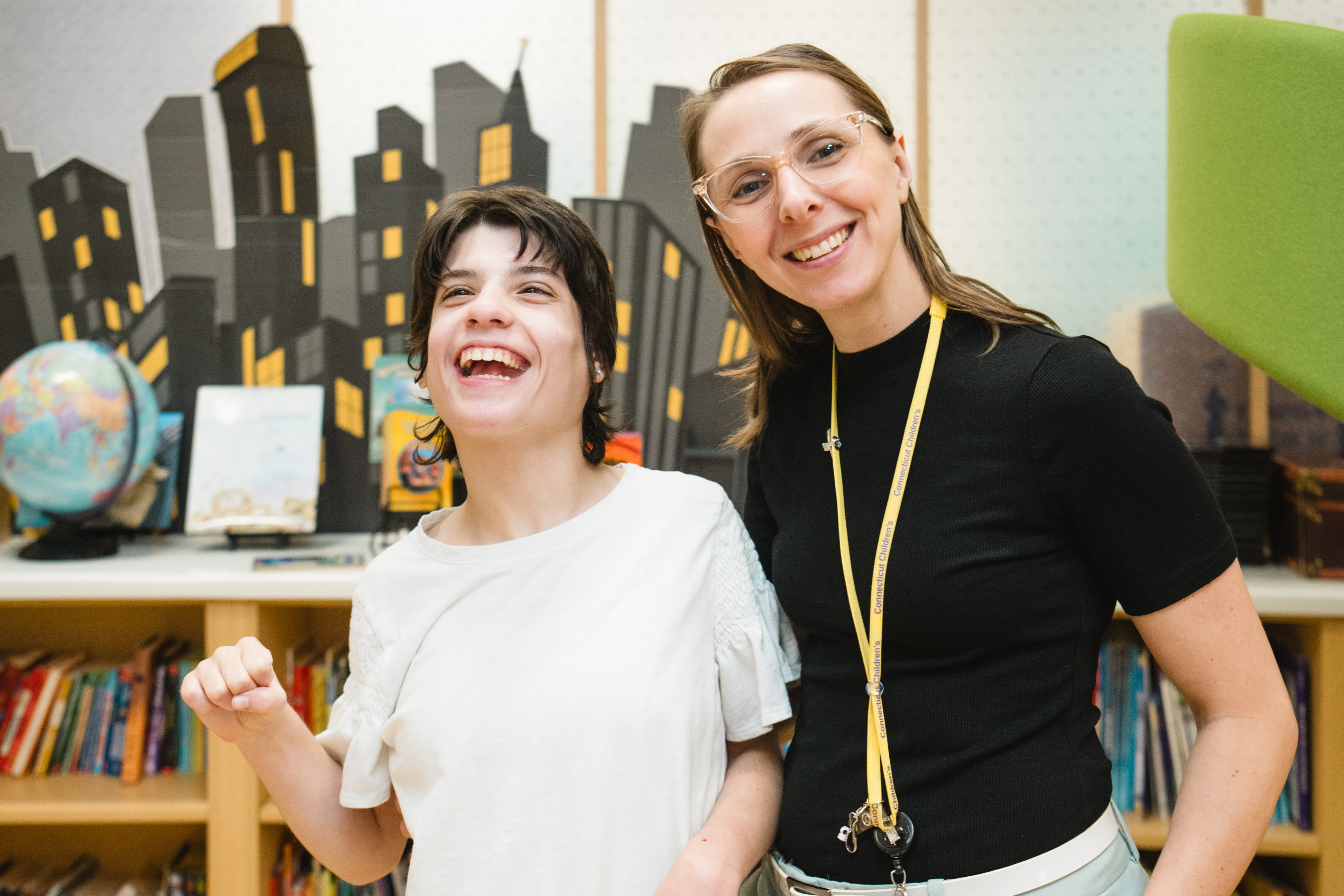A groundbreaking option for kids with epilepsy
Deep brain stimulation (DBS) is already widely used for adults with conditions like Parkinson’s disease and tremor. Each year, researchers are adding new uses to the list, like for obsessive-compulsive disorder, dystonia and depression.
For epilepsy, DBS has been shown to reduce the frequency and severity of seizures by 50 to 70 percent over time — a life-changing difference for kids like Bella.
“It’s not a cure,” says Dr. Worden, “but even a 50 percent reduction means fewer falls. More seizure-free days. More time just being a kid.”
Still, many families don’t know about DBS, or how to see if it’s right for their child. Despite strong evidence of its safety and efficacy, DBS is technically considered “off-label” for patients under 18 — which means it can be hard to access.
For all these reasons, pediatric neurosurgeon David Hersh, MD, had long envisioned a DBS program for Connecticut Children’s.
“For patients like Bella who have failed multiple medications and where we can’t pinpoint the seizures to a specific region of the brain, DBS becomes a really important option,” Dr. Hersh says. “We wanted to be able to offer that at Connecticut Children’s, to give families the full spectrum of surgical options for epilepsy.”
He knew it would take an immense amount of work to get a DBS program up and running — that didn’t intimidate him. He also knew it would take a partner with extensive DBS experience. That’s when UConn Health’s Christopher Conner, MD, entered the picture.
As a fellowship-trained functional neurosurgeon, Dr. Conner specializes in surgical techniques like DBS; he trained with one of the world’s premier functional neurosurgeons. A few years ago, he arrived at UConn Health with a plan to bring the treatment to Connecticut’s adult population. He hadn’t expected the chance to bring it to kids — until he met Dr. Hersh.
“One day we were at a department meeting, and this nice guy from Connecticut Children’s introduced himself,” Dr. Conner recalls. “He said, ‘Want to do DBS in kids?’ And I said yes.”
